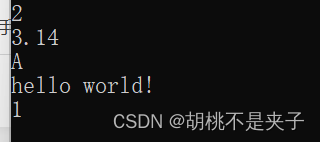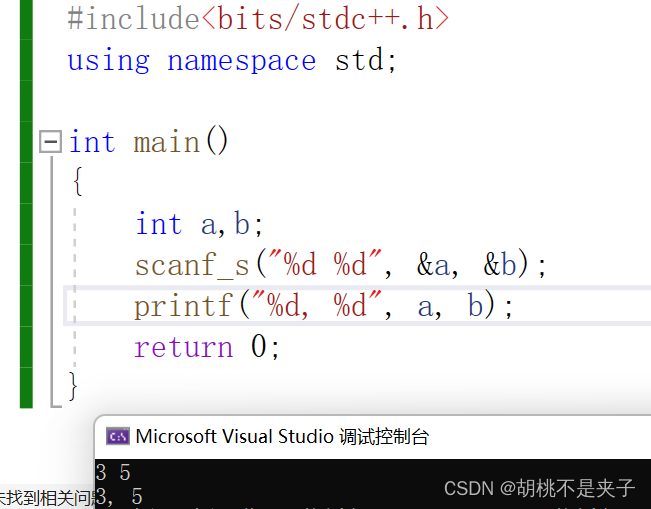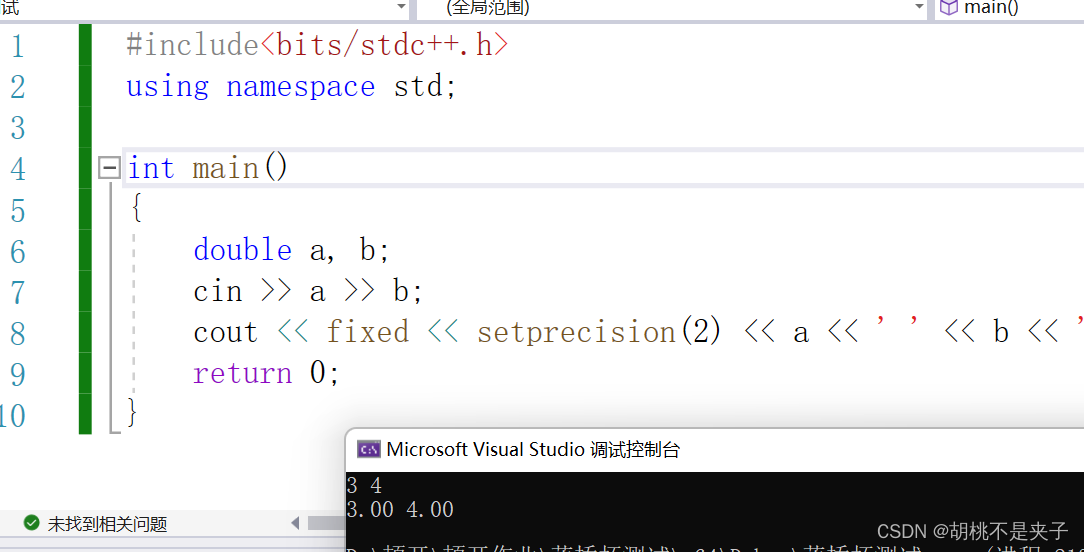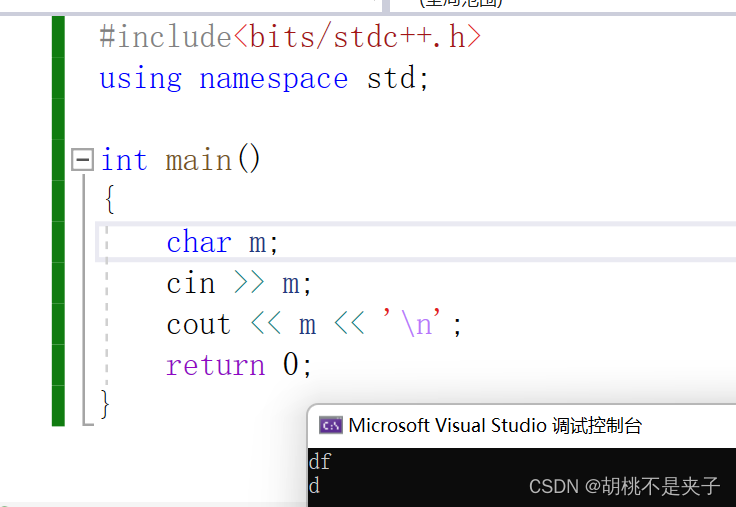
取消同步流是为了解决C++有时遇到空格或回车(不到\0)就会停下的问题
#include<bits/stdc++.h>
using namespace std;
int main()
{//取消同步流ios::sync_with_stdio(0), cin.tie(0), cout.tie(0);int a, b;cin >> a>> b;cout << a + b << '\n';return 0;
}c++基础
数组
#include<bits/stdc++.h>
using namespace std;
int main()
{ios::sync_with_stdio(0), cin.tie(0), cout.tie(0);int x=2;double y=3.14;char ch='A';//字符常量''char s[]="hello world!";//字符串""bool m = true;cout << x << '\n' << y <<'\n' << ch << '\n' << s << '\n'<< m << '\n';//'\n'比endl更快return 0;
}
const
#include<bits/stdc++.h>
using namespace std;
const int N = 1e5 + 9;
/*1e5 表示科学计数法中的 10 的 5 次方,即 100000,
所以 N 的值为 100009。这样定义常量的好处是可以在程序中
多次使用该常量而不需要重复写具体的数值,提高了代码的可读性和维护性。
*/
char a[N];//定义一个大小为N的全局数组,只有N为常量时,才可以这样定义全局数组
int main()
{ios::sync_with_stdio(0), cin.tie(0), cout.tie(0);//可以不写return 0;
}typedef
#include<bits/stdc++.h>
using namespace std;
const int N = 1e5 + 9;
/*1e5 表示科学计数法中的 10 的 5 次方,即 100000,
所以 N 的值为 100009。这样定义常量的好处是可以在程序中
多次使用该常量而不需要重复写具体的数值,提高了代码的可读性和维护性。
*/
typedef long long ll;//将longlong类型定义为ll方便后续使用
ll a[N];//定义一个大小为N的全局数组(类型为long long)
int main()
{ios::sync_with_stdio(0), cin.tie(0), cout.tie(0);//可以不写return 0;
}字符串
#include<bits/stdc++.h>
using namespace std;int main()
{char s[] = "hello";for (int i = 0; i <= 4; i ++ ){cout << s[i] << '\n';}cout << s << '\n';return 0;
}#include<bits/stdc++.h>
using namespace std;int main()
{int a = 3;int b = 5;int tmp;tmp = a;a = b;b = tmp;cout << a << b << '\n';return 0;
}判断奇偶
#include<bits/stdc++.h>
using namespace std;int main()
{int a;cin>> a;if (a % 2 == 0)//注意双等号cout << "偶数" << '\n';else if(a%2==1)cout << "奇数" << '\n';return 0;
}求1-n之间的所有偶数
#include<bits/stdc++.h>
using namespace std;int main()
{int n;cin >> n;for (int i = 1; i <= n; i++){if (i % 2 == 0)cout << i << '\n';}return 0;
}scanf和printf

注意&
#include<bits/stdc++.h>
using namespace std;int main()
{double a,b;scanf_s("%lf %lf", &a, &b);printf("%.2lf, %.3lf", a, b);//保留2、3位小数return 0;
}C++设置精度 fixed setprecision()


C++中cin遇到空格或回车就结束

疑惑不懂scanf和cin取消同步流
)








)








)
